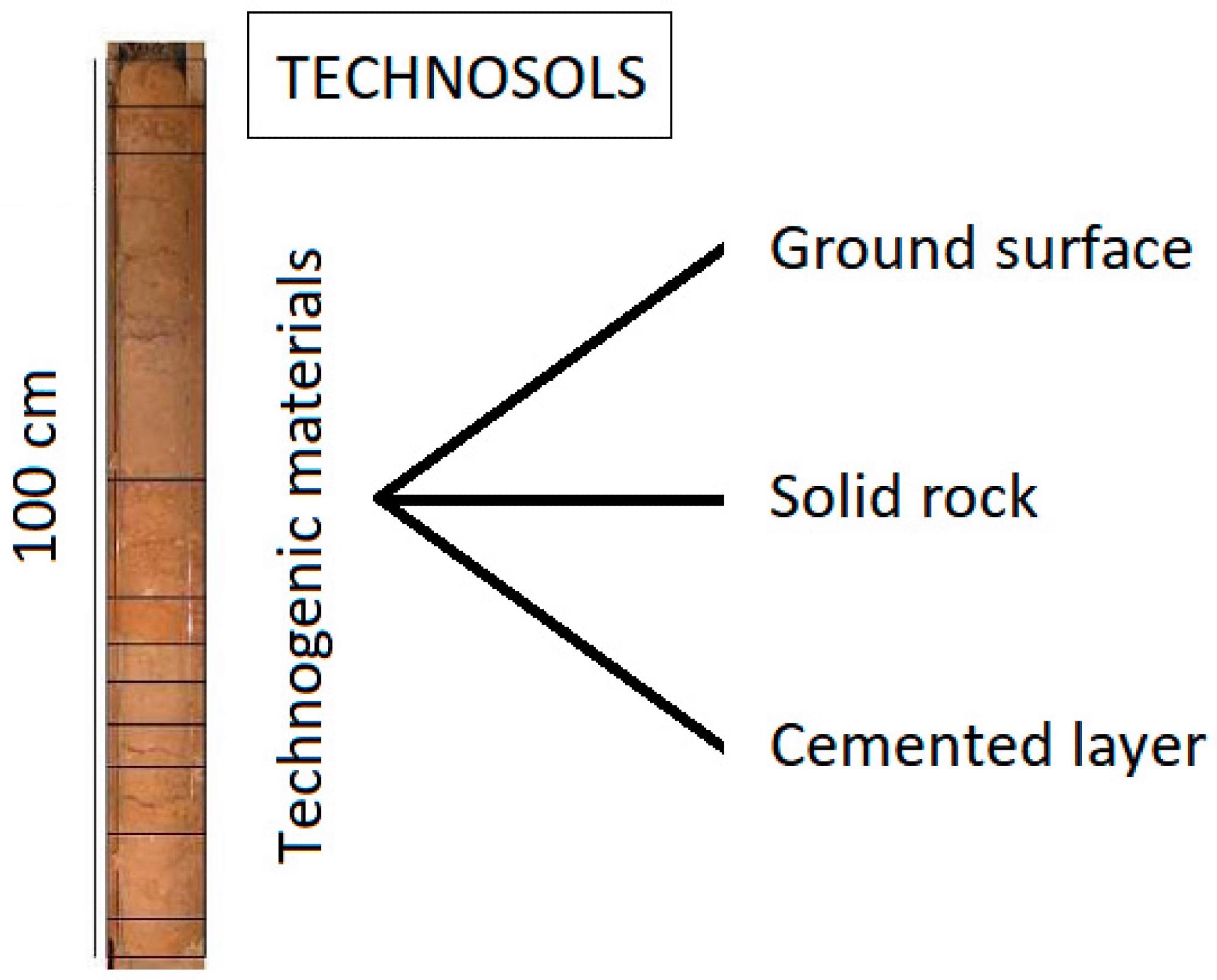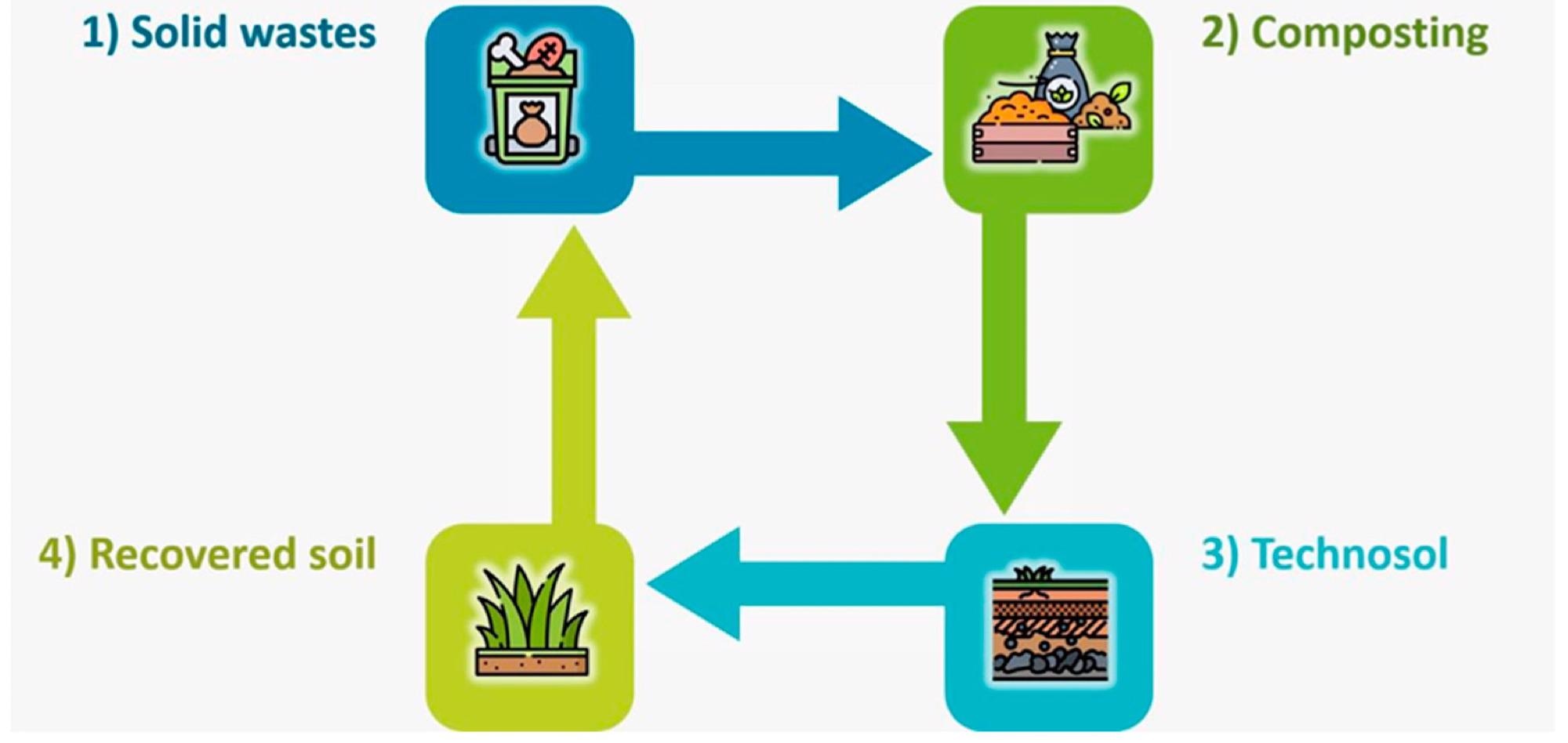Technosols are artificial soils that have been made from organic or inorganic waste and are designed to perform similar environmental functions as naturally occurring soils. A new paper presented in the journal Sustainability looks at the potential application of technosols in the restoration of environments that have been degraded and damaged by human activity.

Study: Recovery of Degraded Areas through Technosols and Mineral Nanoparticles: A Review. Image Credit: Konektus Photo/Shutterstock.com
Urban societies are major sources of nutrient-rich organic and inorganic waste, including urban and agricultural runoff, fossil fuel combustion, household and industrial wastewater effluents, and atmospheric deposition.
The environmental impact of this waste is well known and characterized, and as such, there is a significant drive to minimize its impact on the natural environment.
Much of this waste is known to be relatively thermodynamically stable when maintained under appropriate conditions. Still, some of these components are prone to undergoing physicochemical and mineralogical transformations, which mobilize their constituents and contaminate the surrounding environment, ultimately posing a risk to human, plant, and animal life.

Outline definition of the term “Technosols”. Image Credit: Gonçalves, J et al., Sustainability
Rather than disposing of these wastes in the conventional fashion, many of these residues can be employed in the production of technosols – artificial soils used as agricultural inputs and for the recovery of degraded regions.
The authors highlight that in order to be considered viable, technosols must be able to address the basic demands of the soil by enhancing nutrient availability, promoting soil biological activity, and boosting soil water storage capacity.
The research on the use of technosols in the recovery of degraded regions is still relatively new, as the first study was not conducted until 2007. Despite there being limited studies into this area, the studies that have taken place offer extremely promising findings – particularly when paired with evolving and emerging sustainable technologies.
As technology evolves, so do the potential and applicability of technosols to ‘repair’ degraded soil much more quickly and without the need for further intervention. The fundamental goal in this evolving area of research is to develop technosols into an independent rehabilitation system that offers self-sustainability, therefore fulfilling soils' environmental and productive functions in the areas where they are applied.

Chronological distribution of Technosols research publications in Scopus (2007–2022). Image Credit: Gonçalves, J et al., Sustainability
The goal is to ensure that the receiving area and ecosystem become less contaminated while improving resilience, protecting against future damage, and increasing ecosystem conservation.
In order to advance this area of work, the authors summarize and compare a wide range of existing studies which demonstrate the potential of technosols generated from different residues and compare their efficiency to that of natural soils.
They conclude that technosols’ behavior is comparable to that of natural soil in terms of its structuring, settlement, or subdivision. The advantage of using artificial soil, however, is that it is possible to be more specific in terms of its composition and application and the ability to reuse specific waste that would otherwise be discarded.
The authors also highlight that while there are multiple clean technologies available to treat pollutants, technosols have been garnering increased attention due to their capacity to not only treat contamination directly but to consider existing dysfunctions, improve the resilience of natural systems, and regulate the number of toxic pollutants present in the soil through more natural systems.

Summary of the Technosols system. Image Credit: Gonçalves, J et al., Sustainability
The authors also look at some of the regulatory frameworks surrounding the implementation of technosols, highlighting pioneering regulations from Spain around the use of technosols as a means of waste recovery.
Most notably, these new regulations set out a number of stringent goals, outlining the circumstances whereby it is appropriate to employ technosols; for example, as a waste management solution, as a means of eliminating or reducing the impact of waste in sensitive ecosystems and processes, as a means of stabilizing carbon levels in soil, or as a means of recycling macro or micronutrients such as potassium, nitrogen or phosphorous.
Mining operations remain one of the most significant causes of environmental degradation. The authors anticipate that technosols could offer an improved means of reinvigorating environments once mines have closed and a means of making industrial activity more sustainable overall.
Technosols offer great promise, and these continue to develop and evolve, but because this is such a new technology, there is limited data on the success of applied technosols in the longer term. As a result, it is critical to regularly monitor the behavior and evolution of this soil in order to identify its extent and appropriateness for long-term use.
References
Gonçalves, Janaína O., Carolina M. Fruto, Mauricio J. Barranco, Marcos L.S. Oliveira, and Claudete G. Ramos. 2022. "Recovery of Degraded Areas through Technosols and Mineral Nanoparticles: A Review" Sustainability 14, no. 2: 993. https://www.mdpi.com/2071-1050/14/2/993
Disclaimer: The views expressed here are those of the author expressed in their private capacity and do not necessarily represent the views of AZoM.com Limited T/A AZoNetwork the owner and operator of this website. This disclaimer forms part of the Terms and conditions of use of this website.